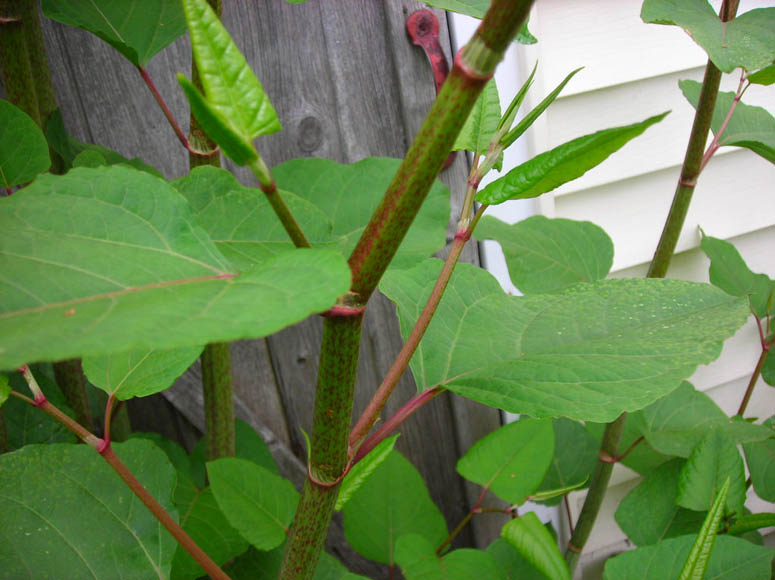
Agricultural News
Invasive Weeds Responsible for Worsening River Flood Damage
Tue, 06 Dec 2011 09:10:55 CST
 This year flooding has ravaged thousands of homes and businesses in communities across the U.S. And scientists say the prevalence of invasive weeds is one of the factors that may be contributing to the damage.
This year flooding has ravaged thousands of homes and businesses in communities across the U.S. And scientists say the prevalence of invasive weeds is one of the factors that may be contributing to the damage.
These foreign invaders are overrunning many vital "riparian" lands the ecologically diverse natural habitats that run along the millions of miles of our nation's waterways and help to prevent or moderate flooding.
"Healthy riparian areas populated by native plants can store thousands of gallons of water per acre," says Linda Nelson, plant physiologist with the U.S. Army Corps of Engineers and former president of the Aquatic Plant Management Society. "They filter the water that flows into a stream after a storm or snow melt and can also mitigate the effects of river flooding. But unfortunately the protection capacity of many of our vital riparian areas is being degraded by invasive weeds."
The native plant species typical of a healthy riparian corridor prosper there and have dense root systems to hold soil in place and protect against erosion. As a result, the soil is highly permeable and can absorb water entering the river and overflowing the banks. Healthy riparian land can even improve water quality as dense, native vegetation absorbs potential contaminants and traps sediment.
But weeds that overrun native riparian vegetation can change everything and seriously degrade our nation's valuable water resources. Common invaders include reed canarygrass (Phalaris arundinacea), saltcedar (Tamarix aphylla) and leafy spurge (Euphorbia esula).
Another good example is knotweed, an aggressive species from Asia introduced here as an ornamental. The most common varieties of this troublemaker include Japanese knotweed (Polygonum cuspidatum), giant knotweed (P. sachalinense), Himalayan knotweed (P. polystachyum) and a Japanese and giant knotweed hybrid (P. X Bohemicum). Knotweeds have been spotted in 41 states and are becoming a real threat to riparian areas, particularly in the Pacific Northwest.
Knotweed roots are far less dense than those of native plants and are unable to hold soil firmly in place. When knotweed invades a riparian zone, stream banks become unstable and soil is stripped away. This scouring effect can actually shift a stream channel, create a sloping bank and result in significantly more sediment in the water. It also reduces the ability of both the riparian zone and the stream to hold water promoting flash floods during periods of heavy runoff.
Why is knotweed so successful at taking over? Like many riparian invaders, it can spread vegetatively, as well as by seed. Each plant produces an extensive network of underground rhizomes that can spread up to 65 feet in all directions. Tens of thousands of dormant buds on these underground stems can sprout new bamboo-like shoots that have been known to break through asphalt.
"I've even seen a picture showing Japanese knotweed that had grown through someone's living room floor," says Timothy Prather, associate professor of weed science at the University of Idaho and a specialist in knotweed.
Even a small fragment of a root or stem can launch a new invasive weed colony. You need to proceed with care and use every tool in your weed control arsenal to control knotweed. Here are a few control tips and best management practices compiled by The Nature Conservancy. Some of these same techniques can be applied to other aggressive plant invaders:
-Manual/mechanical control methods such as mowing, trimming, digging and pulling may work if you are persistent over a period of years. Your objective is to starve the root system, and that means staying ahead of new shoots that are produced from latent buds as you disrupt the plant. Be prepared to cut down or pull new shoots twice a month or more from April to August and then at least once a month until first frost. Repeat the process annually until the knotweed no longer regrows. Also, keep stems that you pull, cut or mow out of the compost pile and well away from any nearby body of water. You don't want the plant to spread to a new location.
-Foliar herbicide applications may be appropriate for large infestations. Use only an herbicide approved for riparian use and take precautions to minimize drift. As with mechanical control measures, timing and persistence are important. Multiple applications may be needed to do the job.
-New stem-injected herbicide techniques are showing great promise. A special tool is used to inject concentrated chemicals directly into a hollow in the knotwood stem. It's a labor intensive process, though, making it best suited for small patches that are easily accessible.
"Reclaiming riparian areas and restoring native species can be vital to flood control, water quality and even wildlife habitat," Prather said. "It is important that we focus on early identification of invasive weeds, understand their growth patterns and how they spread, and establish an effective management plan before it's too late."
Click here for more detailed information on controlling knotweed from The Nature Conservancy.
WebReadyTM Powered by WireReady® NSI
Top Agricultural News
More Headlines...




















